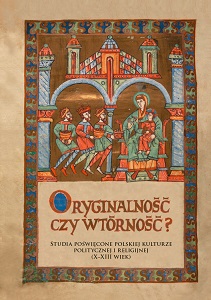Władca i Kościół w średniowieczu wobec przeżytków pogaństwa. Ze szczególnym uwzględnieniem Polski i innych krajów Europy Środkowej
The ruler and the Church in the Middle Ages in the face of relics of paganism. With particular reference to Poland and other countries of Central Europe
Author(s): Roman Michałowski
Subject(s): Middle Ages, 6th to 12th Centuries, 13th to 14th Centuries, 15th Century
Published by: Wydawnictwa Uniwersytetu Warszawskiego
Keywords: medieval history; church history; Christianity in the Middle Ages; religious culture; Poland during the Piast dynasty
Summary/Abstract: The aim of the article is to determine the attitude of medieval Christian societies towards paganism present within their communities. This issue is considered based on materials drawn from the history of the Lombards, from Bohemia and Hungary of the 10th–12th century, from Ottonian and Salian Polabi, and from 11th–15th-century Poland. The social elites adopted two attitudes towards paganism: first, fighting it – this was the case in, for example, Bretislav II’s Bohemia; second, a kind of tolerance, which had various origins: at times it resulted from the belief that repressing paganism is less important than enforcing the widely understood law of God. This attitude can be seen in St Stephen’s Vita minor. At other times, this tolerance was the effect of a common conviction of the early-medieval Church that God’s worship was the most significant part of Christian life, which was accompanied by a disregard for pastoral work in general. These were the motives driving the bishops of Merseburg in the 11th–12th century. However, a third attitude should be mentioned: acceptance. This was the case when gods’ worship was the ideological foundation of the political system of an already Christian country. An evident example of this kind of religious syncretism is Origo gentis Langobardorum. This diversity of attitudes is also noticeable in Polish materials. Thus, a question arises – can we talk about Poland’s originality at all when it comes to the approach to paganism? Perhaps, the difference lies in the fact that in Poland little attention was paid to traditional worship and beliefs. This is why relics of paganism have left a smaller mark on sources than in other places.
- Page Range: 834-886
- Page Count: 53
- Publication Year: 2020
- Language: Czech, Polish
- Content File-PDF

